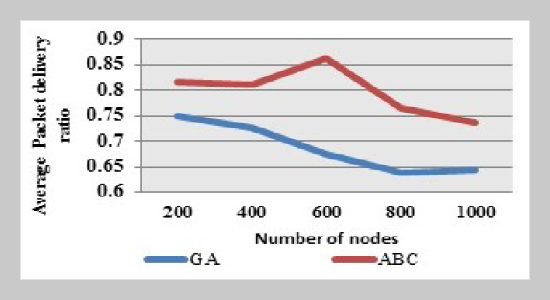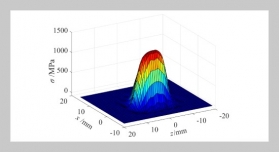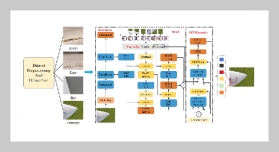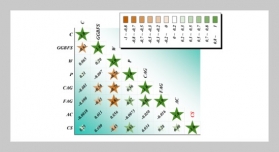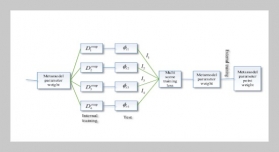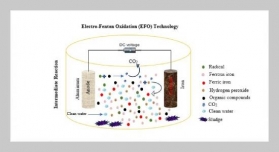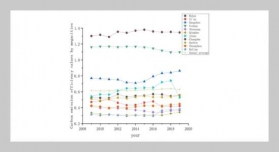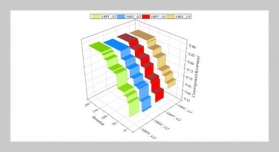C. Sathish 1 and K. Srinivasan2
1Department of Computer Science, Periyar University, India
2Department of Computer Science, Periyar University Constituent College of Arts and Science, India
Received:
March 27, 2021
Accepted:
April 30, 2021
Publication Date:
June 23, 2021
Copyright The Author(s). This is an open access article distributed under the terms of the Creative Commons Attribution License (CC BY 4.0), which permits unrestricted use, distribution, and reproduction in any medium, provided the original author and source are cited.
Download Citation: ||https://doi.org/10.6180/jase.202112_24(6).0013
ABSTRACT
The current world have structured and gained numerous advantages from state-of-the-art of digital and computerized technologies. Internet of Things (IoT) has recently started playing a key role in day-to-day lives, stretching perceptions, and having the capability to monitor our surrounding environment. The definition for agriculture is given as the practice, science, or art for soil cultivation, crop production utilizing diverse techniques of preparation and technologies, and marketing of farming’s end products. Farmer efficacy and effectively can be enhanced with Wireless Sensor Network (WSN) installation for agricultural practice optimization. Gathering of data from multiple sensors is done during data aggregation. To optimize the data aggregation, metaheuristic methods are applied. The processes of mutation, crossover, and natural selection, are replicated in the evolutionary algorithm known as Genetic Algorithm (GA). Artificial Bee Colony (ABC) algorithm’s primary benefit is that it does not get trapped in the calculation of their local minima, and that it also considers the global and local search. An Artificial Bee Colony (ABC) algorithm has been proposed.
Keywords:
Genetic Algorithm (GA), Artificial Bee Colony (ABC), Wireless Sensor Network (WSN), Data aggregation devices, Internet of Things (IoT)
REFERENCES
- [1] Y. Mekonnen, S. Namuduri, L. Burton, A. Sarwat, and S. Bhansali, (2020) “Review—Machine Learning Techniques in Wireless Sensor Network Based Precision Agriculture" Journal of The Electrochemical Society 167(3): 037522. DOI: 10.1149/2.0222003jes.
- [2] S. Rajeswari, K. Suthendran, and K. Rajakumar, (2018) “A smart agricultural model by integrating IoT, mobile and cloud-based big data analytics" Proceedings of 2017 International Conference on Intelligent Computing and Control, I2C2 2017: 1–5. DOI: 10.1109/I2C2.2017.8321902.
- [3] Z. H., H. A., and M. M., (2015) “Internet of Things (IoT): Definitions, Challenges and Recent Research Directions" International Journal of Computer Applications 128(1): 37–47. DOI: 10.5120/ijca2015906430.
- [4] M. Yagouni, Z. Mobasti, M. Bagaa, and H. Djaoui, (2015) “Contribution to the optimization of data aggregation scheduling in wireless sensor networks" Advances in Intelligent Systems and Computing 360: 235– 245. DOI: 10.1007/978-3-319-18167-7_21.
- [5] S. Abbasian Dehkordi, K. Farajzadeh, J. Rezazadeh, R. Farahbakhsh, K. Sandrasegaran, and M. Abbasian Dehkordi, (2020) “A survey on data aggregation techniques in IoT sensor networks" Wireless Networks 26(2): 1243–1263. DOI: 10.1007/s11276-019-02142-z.
- [6] A. D. Andrushia and A. T. Patricia, (2020) “Artificial bee colony optimization (ABC) for grape leaves disease detection" Evolving Systems 11(1): 105–117. DOI: 10. 1007/s12530-019-09289-2.
- [7] S. Hussain, O. Islam, and H. Zhang, (2009) “Genetic algorithm for energy-efficient trees in wireless sensor networks" Advanced Intelligent Environments: 139– 173. DOI: 10.1007/978-0-387-76485-6_7.
- [8] J. Muangprathub, N. Boonnam, S. Kajornkasirat, N. Lekbangpong, A.Wanichsombat, and P. Nillaor, (2019) “IoT and agriculture data analysis for smart farm" Computers and Electronics in Agriculture 156: 467– 474. DOI: 10.1016/j.compag.2018.12.011.
- [9] K. Haseeb, I. U. Din, A. Almogren, and N. Islam, (2020) “An energy efficient and secure IoT-based WSN framework: An application to smart agriculture" Sensors 20(7): DOI: 10.3390/s20072081.
- [10] A. D. Boursianis, M. S. Papadopoulou, P. Diamantoulakis, A. Liopa-Tsakalidi, P. Barouchas, G. Salahas, G. Karagiannidis, S. Wan, and S. K. Goudos, (2020) “Internet of Things (IoT) and Agricultural Unmanned Aerial Vehicles (UAVs) in smart farming: A comprehensive review" Internet of Things: 100187. DOI: 10.1016/j.iot.2020.100187.
- [11] N. T. Hanh, H. T. T. Binh, N. X. Hoai, and M. S. Palaniswami, (2019) “An efficient genetic algorithm for maximizing area coverage in wireless sensor networks" Information Sciences 488: 58–75. DOI: 10.1016/j.ins. 2019.02.059.
- [12] X. Zhang, X. Zhang, and L. Han, (2019) “An Energy Efficient Internet of Things Network Using Restart Artificial Bee Colony and Wireless Power Transfer" IEEE Access 7: 12686–12695. DOI: 10.1109/ACCESS.2019.2892798.
- [13] R. Krishnamoorthy, K. Krishnan, B. Chokkalingam, S. Padmanaban, Z. Leonowicz, J. B. Holm-Nielsen, and M. Mitolo, (2021) “Systematic Approach for Stateof- the-Art Architectures and System-on-Chip Selection for Heterogeneous IoT Applications" IEEE Access 9: 25594– 25622. DOI: 10.1109/ACCESS.2021.3055650.
- [14] R. Taghizadeh-Mehrjardi, R. Neupane, K. Sood, and S. Kumar, (2017) “Artificial bee colony feature selection algorithm combined with machine learning algorithms to predict vertical and lateral distribution of soil organic matter in South Dakota, USA" Carbon Management
8(3): 277–291. DOI: 10.1080/17583004.2017.1330593. - [15] M. S. Kamalesh, B. Chokkalingam, J. Arumugam, G. Sengottaiyan, S. Subramani, and M. A. Shah, (2021) “An intelligent real time pothole detection and warning system for automobile applications based on iot technology" Journal of Applied Science and Engineering
24(1): 77–81. DOI: 10.6180/jase.202102_24(1).0010.


